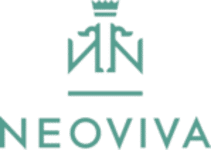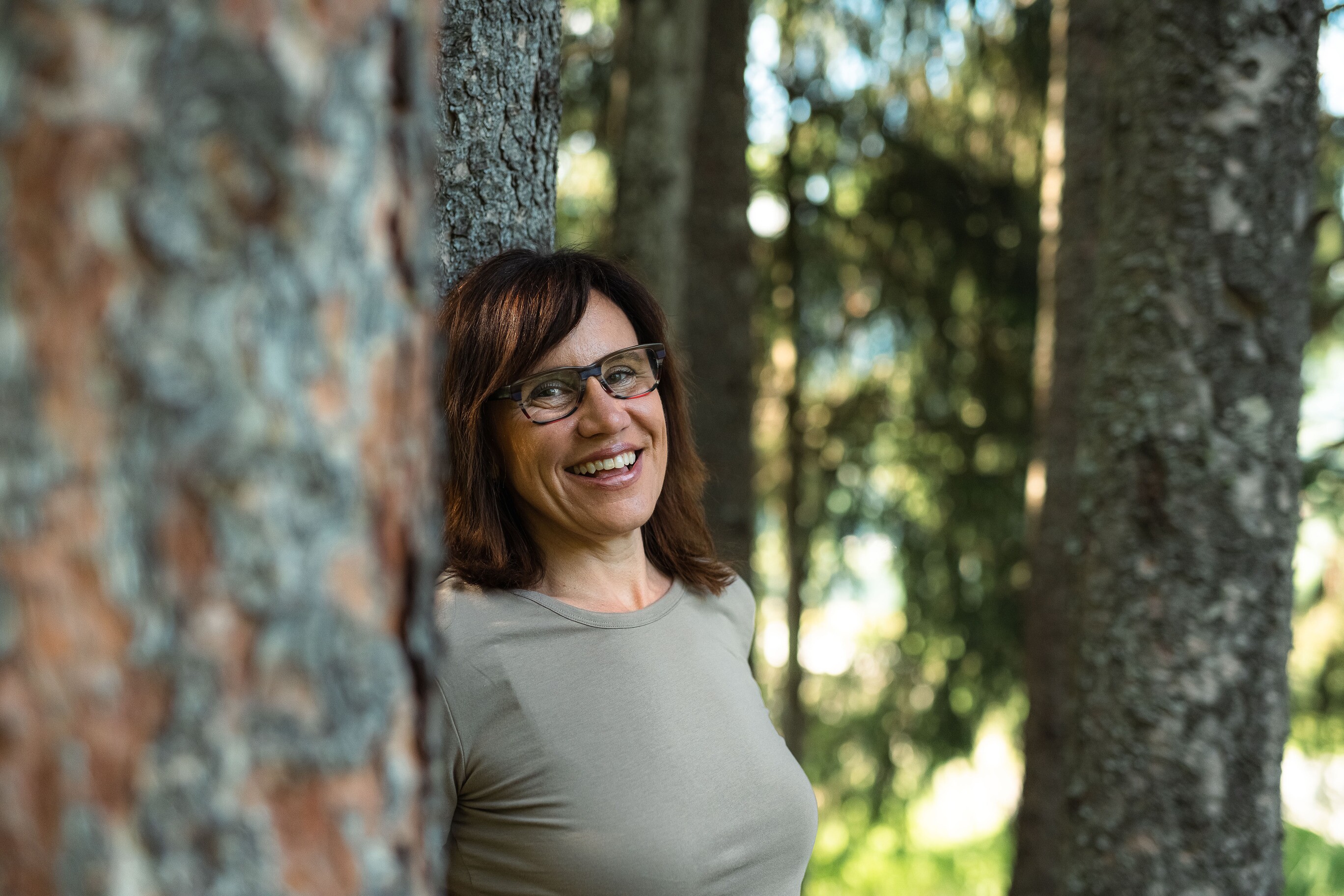An interview with Nadine Gaeschlin
When Nadine shares her experiences, it’s with the calm and knowledgeable assurance of someone who has walked the path she guides others on. She is warm, thoughtful, and grounded, much like the forest she often returns to. But her journey into nature-based therapy wasn’t part of a neatly laid plan. It was, as she describes, “a wake-up call,” the kind that reorients a life entirely.
Nadine’s story begins in Switzerland, though her childhood unfolded across Africa and Asia, instilling a deep, intuitive connection with the natural world. Despite early academic interests in well-being and health prevention, she pursued a more systemic approach, earning a master’s degree in political science. “Addiction is a systemic issue,” she says now, reflecting on how that degree helped her understand complex human systems, something essential in addressing the multi-layered roots of addiction.
Later, driven by personal experience of trauma, she trained as a somatic trauma therapist. After losing her father suddenly at 20, Nadine found that traditional talk therapy only took her part of the way through grief. “Trauma is stored in the body,” she explains. It wasn’t until she began working with a somatic practitioner herself that she experienced real movement. That insight would become a cornerstone of her work with clients.
But it was a slipped disc, a moment of literal and metaphorical collapse, that truly shifted her path. Her doctor, a spine surgeon, surprised her by recommending not surgery, but a lifestyle change. “You managed to produce the slipped disc through high, very intense body tension,” he told her. “Your body can find its way back. You need to invest in your health.”
No one had said that to Nadine before. It hit hard and true. “That was the wake-up call,” she recalls. “I’d always invested in my career, in another certification. But now I needed to invest in myself.”
That investment led her to the forest and to a therapeutic approach that would fit seamlessly into NEOVIVA’s philosophy of treating the whole person.
The forest as a turning point
With four months of medical leave, Nadine began simply by doing what she loved: being in nature. “Nature time had reduced itself to none,” she says of her corporate life. But once she started spending unstructured time outdoors, things began to shift. One day, floating in a quiet lake near her home, she listened to the birds, the rhythm of the water, and the breeze. “I felt an inner peace I had missed for years,” she says. “It felt like life. I was touching life again.”
That experience sparked a deeper inquiry. Nadine searched and found a forest therapy guide certification. With nothing like it available in Switzerland, she enrolled on a course, the only one of its kind, in Germany. It marked a turning point. At 48, she left her corporate job and opened her own practice. “It felt like a calling,” she says. “Through a very personal crisis, I found what I was meant to do.”
From personal healing to professional practice
Nadine now runs her own academy in Switzerland, training Nature and Forest Therapy guides. In parallel, she has become a valued member of NEOVIVA’s small, multidisciplinary team, working with clients in addiction recovery. Her approach is rooted in Shinrin-yoku, a Japanese mindfulness practice that immerses individuals in nature to restore mental, emotional, and physical well-being.
Forest bathing, as Nadine teaches it, is anything but a stroll through the woods. “Mindfulness in nature needs structure,” she explains. In Nadine’s practice, that structure unfolds in five phases: checking in with the body and surroundings, slowing down through mindful walking, engaging the senses, practising stillness, and concluding with a Zen-inspired tea ceremony.
Each phase is designed to gently transition clients from their daily state of sympathetic nervous system arousal, driven by stress, anxiety, and vigilance, into the regenerative calm of the parasympathetic system. It’s not a technique; it’s a carefully sequenced experience.
“We build up nervous system health, coping mechanisms, and mindfulness capacity,” Nadine says. “That’s my job. To enable people to experience that shift from sympathetic to parasympathetic.” This shift is particularly valuable in NEOVIVA’s therapeutic setting, as it prepares clients to engage more deeply with subsequent therapy, counselling, or group work.
Nature and addiction recovery
For individuals in addiction recovery, the experiences Nadine facilitates can be profound. “Often, when people use substances, they want to dissociate,” Nadine explains. “Forest therapy brings them back to themselves in a way that feels safe and soothing.” She emphasises that many clients arrive guarded, sceptical, or emotionally disconnected. “But nature doesn’t judge. You don’t have to put on a face. You are just okay, wherever you are.”
The simplicity of that acceptance can be transformative, she explains.
Within NEOVIVA’s integrated framework, these breakthroughs don’t stand alone. The shifts Nadine witnesses in clients through moments of trust and glimpses of self-awareness are shared with the rest of the team, so that they can be picked up and reinforced in other therapeutic contexts.
She recalls a female client at NEOVIVA who, after practising mindful walking, suddenly realised: “This is my pace of life, and I’ve never been allowed to live at it.” Another NEOVIVA patient, quiet and reserved during his first session, returned six months later asking to repeat the same exercises and stories, proof that seeds planted in the forest can take time to grow, but grow they do.
Forest bathing isn’t talking therapy. “I don’t find solutions for their problems,” Nadine says. “NEOVIVA have other therapists for that. I build up the clients’ resources.” And often, those resources come not through words, but through sensation: hearing birdsong, feeling bark, watching light ripple through leaves, and tasting the forest in tea.
Trauma-informed, body-based healing
Nadine’s approach is particularly attuned to clients with trauma, including those with complex dual diagnoses, like addiction and affective disorders. As a somatic trauma therapist, she understands how essential it is to help clients regulate their nervous systems.
“I’ve come to learn that nature is your preferred sparring partner for self-regulation,” she says. Techniques like “54321” grounding (identifying five things you see, four you hear, etc.) become far more effective outdoors. “Mindfulness in nature is effortless,” she says. “It comes much more naturally than people realise.”
Trauma survivors and those in recovery from addiction often live in a state of chronic arousal. “They have minimal experience of regeneration,” Nadine says. Her work helps reintroduce that state gently. Over time, it expands what trauma experts call the “window of tolerance,” allowing clients to manage triggers better and regulate emotions in daily life.
Working in harmony: Nadine and the NEOVIVA team
While Nadine’s personal journey brought her to the forest, it is her collaboration with the NEOVIVA team that allows her work to have such a profound and lasting impact.
At NEOVIVA, Nadine’s Shinrin-yoku sessions are not an isolated experience. They are part of an integrative web of therapies that feed into each other. There is constant communication between team members. Insights gained in the forest are shared with counsellors, psychotherapists, and other specialists, so the emotional shifts that arise in the trees can be reinforced in other settings.
The integration works both ways. Sometimes, Nadine is briefed before a session about a client’s particular challenges so she can adapt her sensory and mindfulness activities to meet that person’s needs.
Nadine notices something that not all recovery clinics do: NEOVIVA actively harnesses the power of community as a resource for healing. She says that with a small number of clients, bonds form quickly. “Patients often refer back to memories from previous forest bathing sessions when talking to newcomers.”
Her sessions align with NEOVIVA’s therapeutic culture and its commitment to self-awareness and empowerment. The ZEN-based mindfulness, polyvagal-informed techniques, and nature-based sensory experiences that she shares with clients provide practical tools for self-management and emotional regulation. It’s about building a personalised toolkit they can use long after the clinic, a goal that is reflected throughout the team.
“We all share the belief that there is no ‘one-size-fits-all’ in recovery,” Nadine says. “Each client has a unique set of tools, some hidden, some yet to be developed. At NEOVIVA, we uncover them together.”
The group effect
Though forest bathing can be a deeply personal practice, Nadine also emphasises its power in group settings. “It brings people together more quickly than anything else I know,” she says. Shared experiences in nature foster connection, empathy, and even playfulness. Clients compare sensory experiences, such as the feel of bark or the taste of something. They laugh, reflect, and share without any competition or judgement.
Sometimes, the group dynamics even allow clients to step into leadership roles. Nadine recalls a moment when a patient at NEOVIVA encouraged a fellow client to try a particular forest food. “You can trust me,” the patient said. “You’ll feel safe.” These moments of mutual trust and shared courage are deeply empowering and often mark turning points in the group’s connection and individual healing journeys.
Reshaping the relationship with nature
One of the most poignant things Nadine hears from NEOVIVA’s clients is how they “forgot about nature.” Many had reduced it to a place for exercising, getting their “10,000 steps done,” rather than for connection. Forest therapy reawakens that bond. “We want to get them to a place where they are with nature, not just consuming it,” Nadine says.
Even in urban environments, this connection can be reclaimed. Nadine highlights studies showing that just 15 minutes a day in nature, without screens or distractions, can yield measurable health benefits. A client once told her that after adopting a dog, he noticed the seasons for the first time. “We live in rhythms,” Nadine says. “So does nature. It’s a reconnection that matters.”
Dispelling misconceptions
Of course, forest bathing comes with its share of scepticism. Nadine often hears people say, “Now you want me to pay for a walk in the forest?” Or, “Do I have to hug a tree?” She gently counters with education. “Forest bathing is a nervous-system-based practice,” she explains. “It’s not esoteric, it’s science backed.”
And it’s powerful. In a world where burnout is on the rise, screen time dominates, and natural rhythms are often forgotten, Nadine views forest bathing not just as therapy but as an essential medicine for modern life.
Living what she teaches
Nadine doesn’t just guide others in forest therapy; she practices it. “There’s no hierarchy in my sessions,” she says. “I experience it with them, every time.” After a session, she might swim in the lake or walk her dog across open fields. She lives in the countryside and treasures quiet moments. The forest and nature are not just her workplace; they’re her refuge.
She’s also somewhat of a pioneer. Seven years ago, she left her corporate job to pursue a path few in Switzerland even knew existed. “People told me I would fail,” she remembers. “But I had this determination inside me. If I found this nature-based healing brilliant, it was worth bringing to others.”
A final word from the forest
When asked what she’s learned from nature, Nadine doesn’t hesitate to respond. “Nature always restarts,” she says. “Whatever happens, it reorganises. It doesn’t abandon us.” She sees the magic in small moments, a flicker of light, the rhythm of water, the scent of leaves.
“If your heart and senses are open, you’ll find that there’s magic out there. When you feel awe, you cannot be stressed at the same time. That’s a gift.” For Nadine and for the people she guides through addiction recovery, the forest is more than trees and trails. It’s a return; a return to presence, to peace, and most of all to possibility.




0 Comments